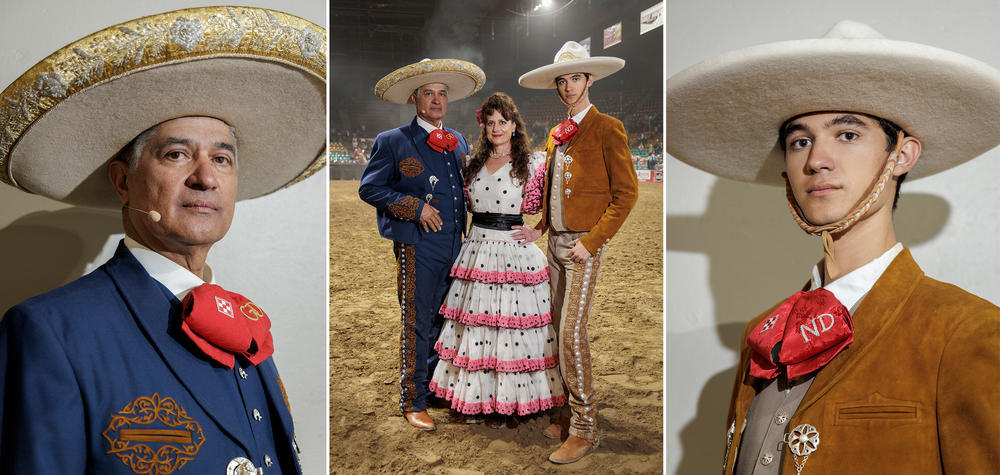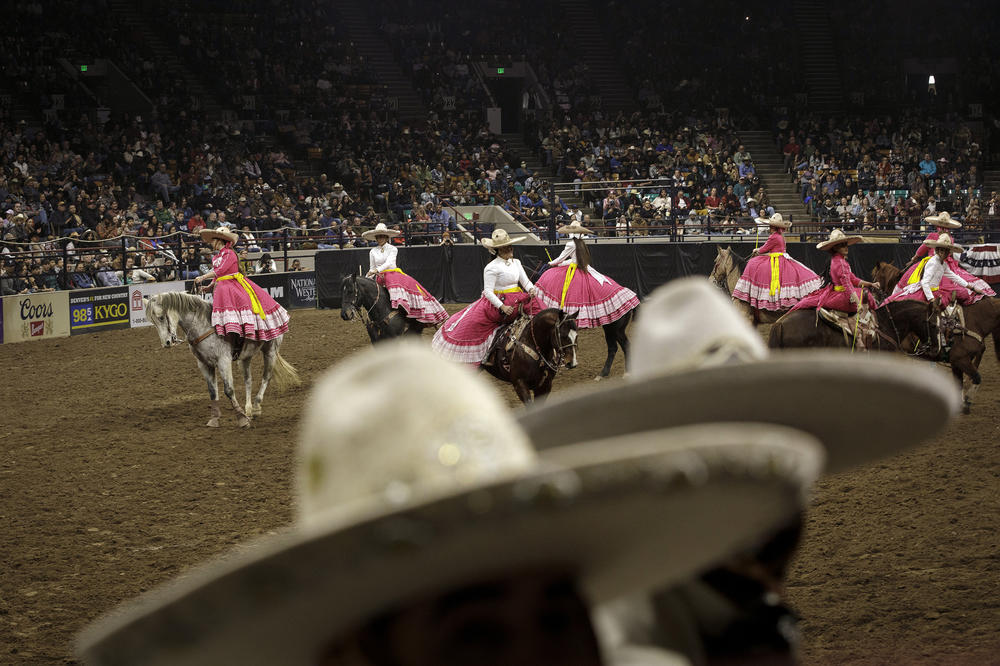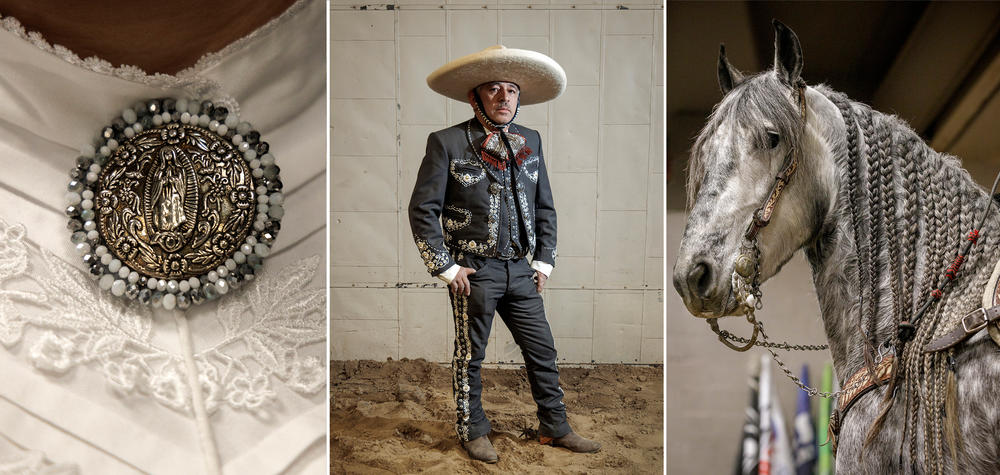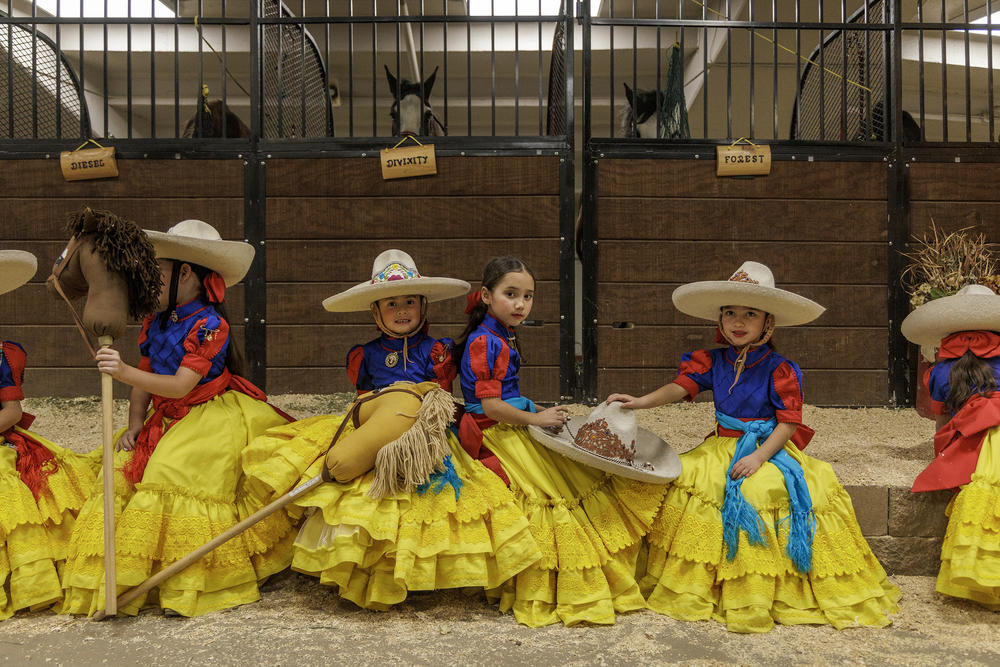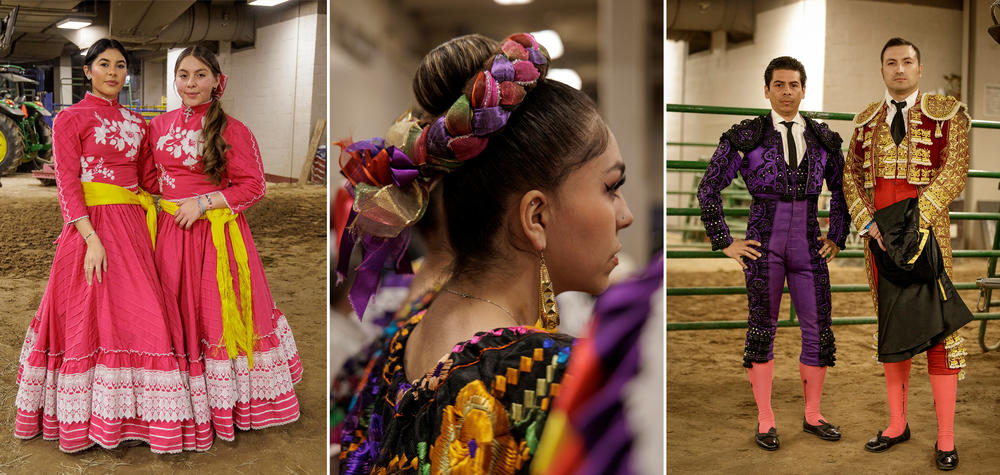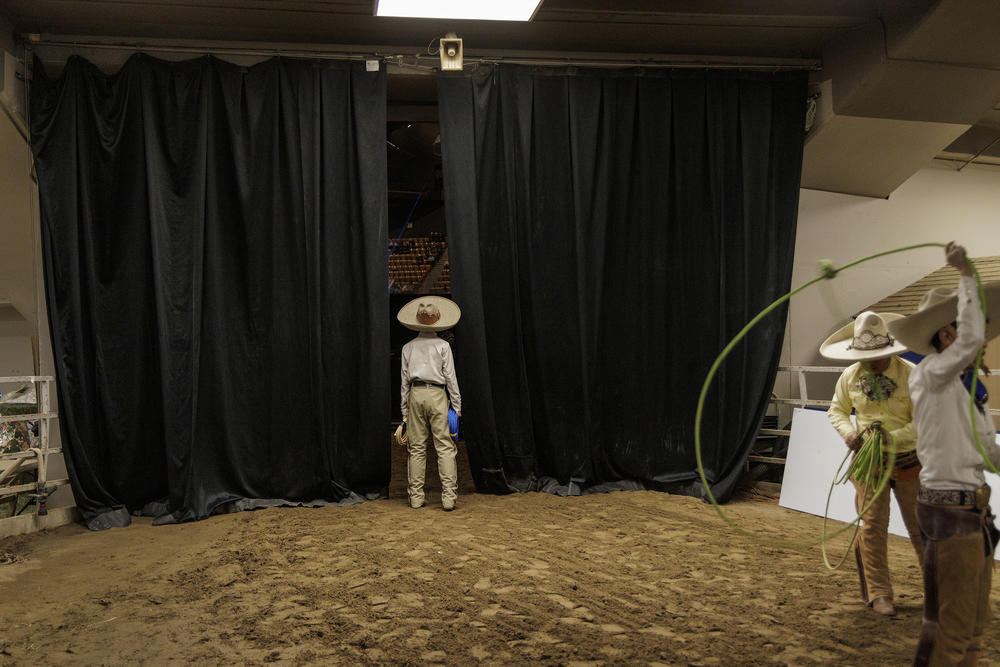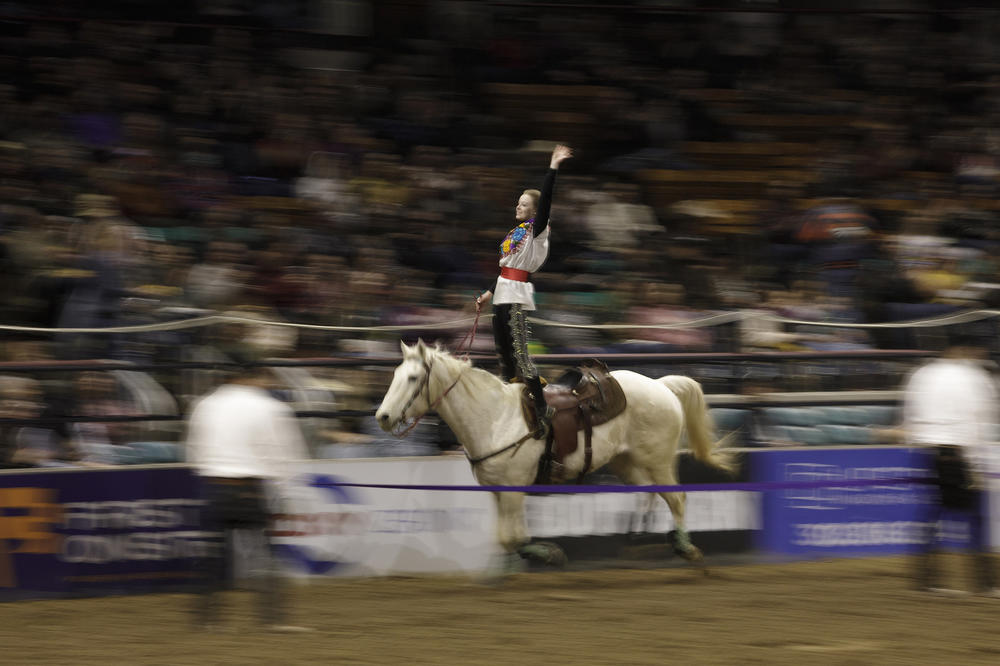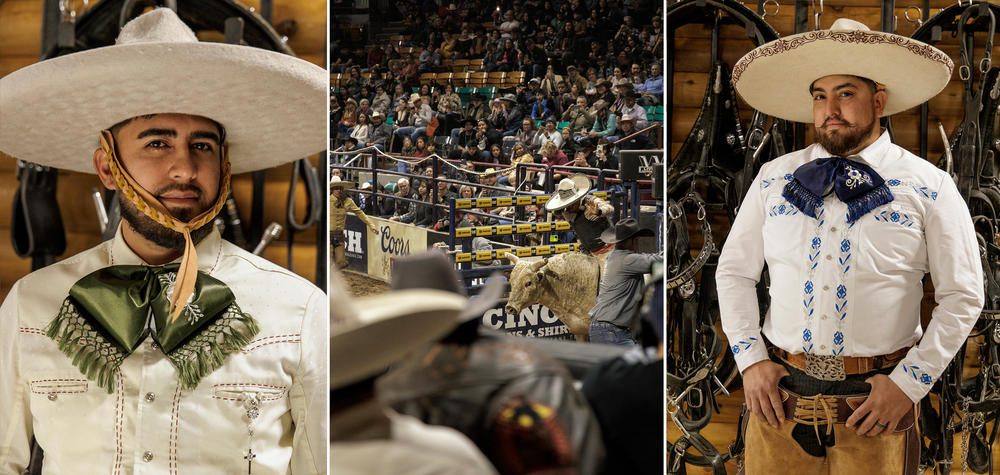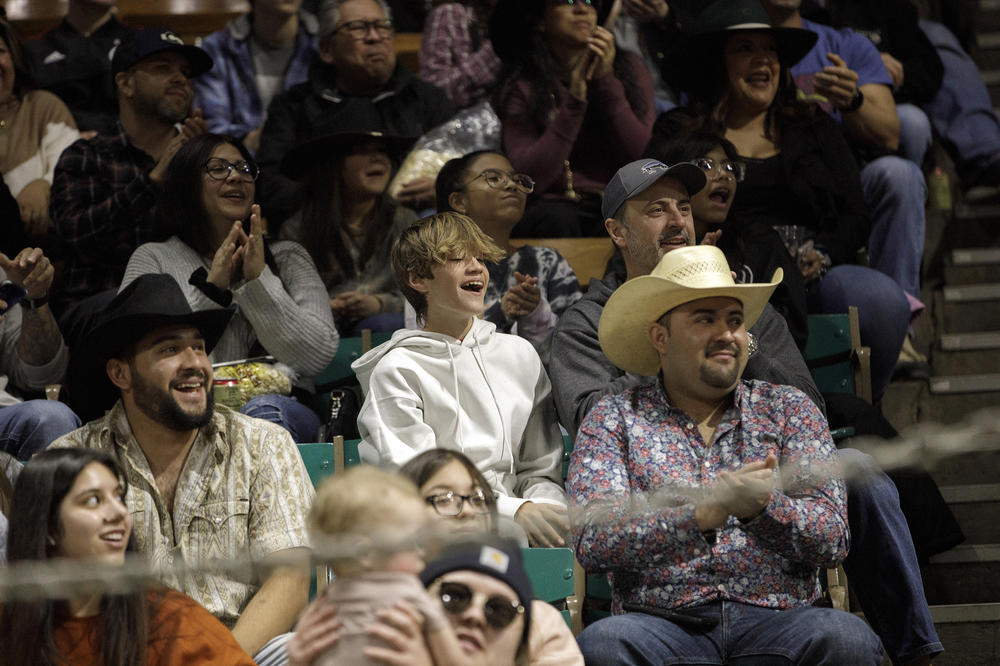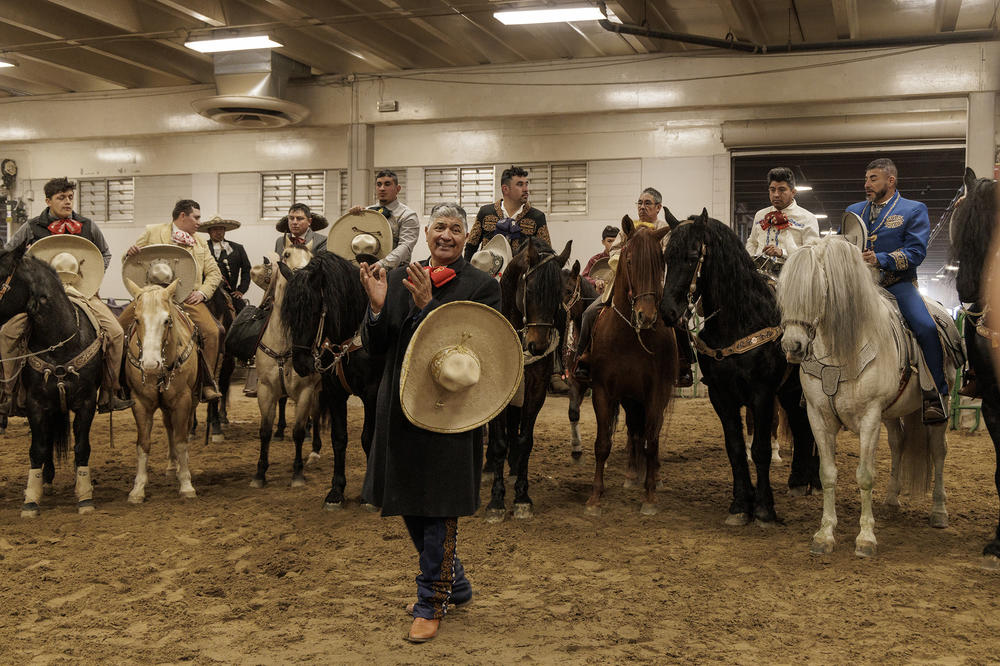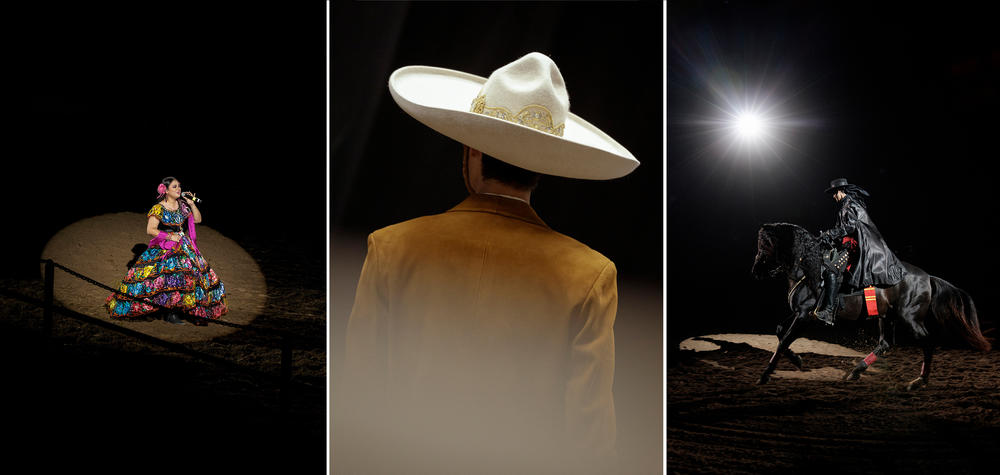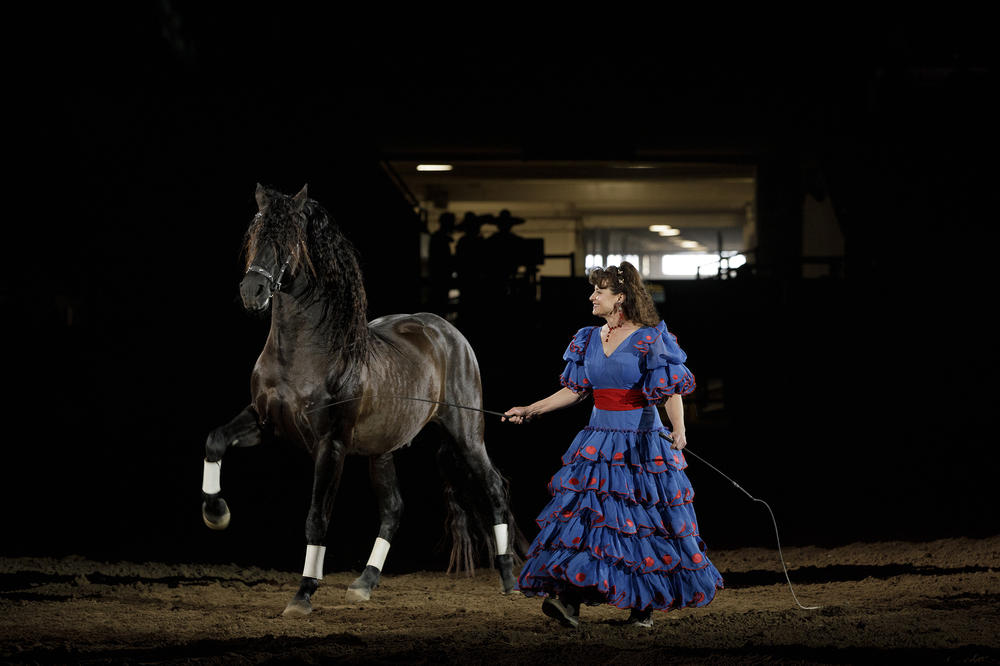Section Branding
Header Content
A look at how one family keeps traditions alive at a rodeo extravaganza in Colorado
Primary Content
When Gerardo "Jerry" Diaz takes a rodeo stage, he makes a grand entrance wearing a riding suit and a wide-brimmed sombrero decorated with gold and silver embroidery. He is a fourth-generation charro, continuing the traditions that originated with his great-grandfather over 150 years ago. He has produced some of the world's largest Mexican rodeo shows, where he performs with his wife, Staci, and his son, Nicolas.
The Diaz family will be performing again at the National Western Stock Show this weekend for the 30th anniversary of their Mexican Rodeo Extravaganza in Denver, Colo. The show features Mexican-style bull riding, trick roping, mariachi music, Portuguese-style bullfights and more, all choreographed by Jerry. The family partners with local groups, including Adelita de Colorado, Flor de Aguilena and the Rough Stock Riders, to put on the performance.
In Mexico, a charro is a horseman from the countryside with a history dating back to the 16th century. This cattling culture originated when the Spanish brought horses to the Americas, but it transformed into a Mexican tradition when Indigenous laborers gained status as skilled ranchers. The Indigenous people also transformed the Spanish attire into the iconic charro outfit through their artisanal craftsmanship and sourcing local elements to add embroidery and metal work.
Today, charrería is the national sport of Mexico and is often practiced in the Southwest United States.
Escaramuza is the only female equestrian event in charreria. The women ride sidesaddle, inspired by the fearless adelitas — women fighters in the Mexican Revolution. At the extravaganza, women also partake in folklórico dance, and Staci Diaz showcases her renowned stallion dance. Her upbringing is similar to Jerry's: "My background comes from horses too. I was raised performing, my grandparents were performers, so our bond with our horses is everything … they become part of you; they become family."
With both Jerry and Staci raised among rodeo culture, it is no surprise that children are also part of the extravaganza. They can be seen sporting colorful dresses and cowboy outfits echoing those of the seasoned performers. The main difference being that they take the stage on stick horses for their choreography.
The family is based in Texas and spends hours each day training, and it can take years — even up to a decade — to get a horse to the level of competition that the audience gets to see. Staci says what she hopes the audience leaves a performance with is "a beautiful image in their mind of the culture and the tradition and the history. I want them to feel as happy as we do while we're out there performing for them."
Amanda Lopez is a photojournalist based in Denver and LA. You can see more of Amanda's work on her website, AmandaLopezPhoto.com, or on Instagram, at @snapshotlopes.
